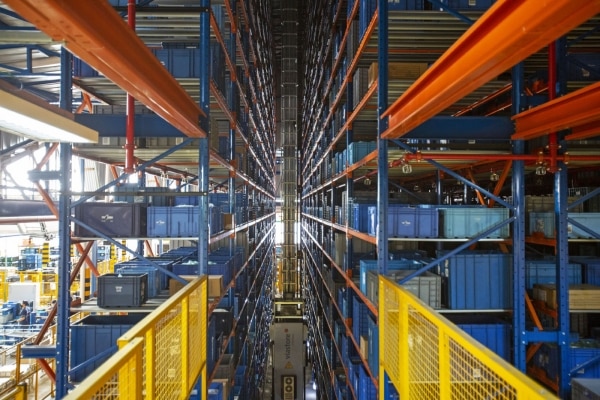Strong cost focus
- Modularization, automation and strategic sourcing are key
to drive profitable growth through cost competitive products
with best-in-class product design and quality (see section
“Modularization and automation”) - In addition, continuous cost improvements are an important part of our strategy – achieved by improving cost structures and developing methods, processes and skills.
- The track record is strong with an annual average reduction of -3% in variable product cost 2016-2021.
- We are accelerating structural cost reductions and execution of
product cost measures to restore margins given the continued
weak consumer demand and competitive pressure in the market. The cost reduction target for 2024 vs 2023 is SEK 4-5bn.
In addition to these targeted cost savings, we aim to continue
to annually reduce product cost at a similar rate as during the
period 2023-2024. - Electrolux manages working capital to release resources that can be invested in growth activities.
- High share of variable costs – about 70% of the Group’s total
cost base.
Focus areas to increase efficiency and drive profitable growth
The illustration shows which areas that will primarily drive cost efficiency but also contribute to profitable growth.
High degree of variable costs
| SEKbn | 2023 |
|---|---|
| Net sales | 134 |
| Direct material | -56 |
| Sourced products | -14 |
| Other variable costs | -27 |
| Operational structural cost | -28 |
| Innovation and marketing structural cost | -9 |
| EBIT excl. non-recurring items | 0.4 |
| Variable cost | ~70% |
| Structural cost | ~30% |
Variable costs:
Direct material incl. raw material and components. Sourced products incl. small appliances, vacuum cleaners, air conditioners, microwaves, etc. Other variable costs incl. direct labor and other variable production costs as well as costs for warranty and logistics.
Structural costs:
Operational structural costs incl. all fixed factory and warehousing costs, depreciation and administration. Innovation & marketing structural costs.
SEK 8bn re-engineering initiative
- SEK 8bn committed to investments in modularization and automation in the Americas and Europe.
- The Curitiba, Sao Carlos and Anderson factories are ramped up.
- The Springfield and Susegana factories are currently in a ramp-up phase.
- The re-engineering investments are vital to drive profitable growth through strengthened cost competitiveness and improved mix.
- Key benefits include increased operational efficiency and flexibility, strengthened production cost competitiveness, increased innovation speed to market as well as a sharpened product offering through design and quality.
- Modularization will continue to be key once the SEK 8bn re-engineering initiative is complete.
- Earnings benefit from the re-engineering initiative will mainly be realized in North America related to the investments in Anderson and Springfield.
- Cost savings are mainly driven by direct material savings and improved labor productivity.
- Mix improvements are driven by increased share of new premium products produced compared to before the investments.
- The cost savings from the re-engineering initiative are included in the total cost savings from the Group-wide cost reduction and North America turnaround program. In 2023, the program had a positive year-over-year impact of SEK ~5.5bn and the cost reduction target for 2024 vs 2023 is SEK 4-5bn.
- The re-engineering initiative will also realize significant sustainability benefits such as improved energy efficiency and safer working environment.
- Read about how our investments in the Sao Carlos cooking facility in Brazil have resulted in a sharper product offering, which is gaining market shares in attractive categories, while at the same time being produced in a more cost and resource effcient way, at www.electroluxgroup.com/attractive-ovens-Sao-Carlos/
Modularization and automation are key to drive profitable growth
- Cost competitive, high-quality products are vital to drive profitable growth.
- The SEK 8bn re-engineering investment initiative significantly increases the use of global modularized products for refrigerators/freezers and cooking products.
- Benefits from modularized products in automated production include:
- Sharpened offering with more relevant features at lower costs.
- Increased speed of innovation by leveraging and accelerating global technologies.
- Improved product design – using modularized bases makes it easier and more efficient to apply updated designs.
- Best-in-class product design and quality.
- Read about how the many benefits of the modular approach make us strengthen our market position in the attractive multi-door refrigerator category at www.electroluxgroup.com/the-many-benefits-modular-multi-door-fridges/
Significantly leverage our global scale and technology deployment through global modularized products
Note: graphs show % of volume using global modules over total In-house production volume. Global modularized products are used in more than one product and in more than one region. The SEK 8bn re-engineering initiative was launched in 2018.
*Front-load laundry.
Leveraging global scale in strategic sourcing
- Strategic sourcing is the single most important initiative to reduce product costs.
- We are accelerating product cost savings by increasing sourcing from low-cost countries as well as by continuing to consolidate our supplier base and number of components by further leveraging our modularized product platforms.
- In 2023, Electrolux purchased raw materials and components for SEK ~53bn, of which SEK ~24bn referred to raw materials
- The global purchasing function coordinates and administers the vast majority of all direct material purchasing.
- By increasingly introducing modularized products, the Group’s global scale can be leveraged in terms of procurement and R&D.
- Enables both fixed and variable cost reductions.
- Increases flexibility by allowing the customization of products using a limited number of standardized modules.
- Increases economies of scale in the sourcing of components.
- The Electrolux Responsible Sourcing program supports a global effort to make the right decisions on suppliers and promote the sustainability performance of the supply base.
- A global credit insurance program is in place for many countries to reduce credit risk. Electrolux offers its suppliers the opportunity to utilize supplier finance.
Raw material exposure 2023
Sensitivity analysis, year-end 2023
| Raw materials | Change +/- | Pre-tax earnings impact -/+, SEKm |
|---|---|---|
| Stainless steel | 10% | 300 |
| Carbon steel | 10% | 900 |
| Plastics | 10% | 500 |
Changes in raw materials refer to Electrolux prices and contracts, which may differ from market prices. The figures in the sensitivity table are rounded.
Combining global benefits with deep local understanding
- Being global with a local presence and knowledge of each regional market means better adapting to changing consumer demands and sustainability related requirements.
- Three well-established brands – AEG, Electrolux and Frigidaire – serve different regions and market segments.
- While local understanding is a strength, the benefits of being global are equally important. This as scale in technology deployment and sourcing are key to ensure competitiveness both in terms of innovation and costs.
The Frigidaire consumer represents middle American core families with family life and friends in focus

Improving stability and mitigating against financial fluctuations
- Global presence makes Electrolux less sensitive to macroeconomics in specific market regions. This helps to smooth out seasonality and fluctuations in economic cycles – to mitigate against financial performance fluctuations.
- The Group’s global presence, with manufacturing and sales in a number of countries, offsets exchange rate effects to a certain degree.
- The principal exchange rate effect arises from transaction flows – when purchasing and/or production is carried out in one currency and sales occur in another currency.
- The major currencies for the Electrolux Group are the USD, EUR, CAD, GBP, CHF, BRL and AUD.
- Read more about Electrolux currency exposure www.electroluxgroup.com/en/currency-exposure
Digitally integrated supply chain and manufacturing
- Digitalization helps drive improved productivity and flexibility in Electrolux operations through:
- Improved visibility and planning.
- Installing a digitally managed environment within factories that monitors operational information in real-time.
- Speed and accuracy are what customers’ and consumers’ expect, and are even more important as online sales grow.
- Electrolux is transforming from a traditional manufacturing efficiency & push approach to demand & service driven supply chain model.
- Control tower concept allows us to get an end-to-end view of the supply chain.
- Data driven decision making based on transparent processes and globally aligned data.
- Agile ways of working support the digital transformation of our operations.
- Nurturing a digital innovation culture.
Digitalization optimizes supply chain including managing inventory levels


